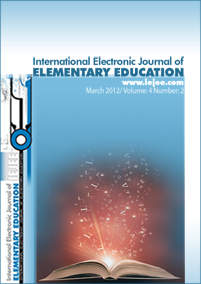References
Alghazo, E. M. (2005). Special education teacher perceptions towards effective instructional practices
in the United Arab Emirates (UAE). Teacher Education and Special Education, 28(3-4), 221-229.
Carrington, B., Tymms, P., & Merrell, C. (2008). Role models, school improvement and the ‘gender
gap’—do menbring out the best in boys and women the best in girls? British Educational Research
Journal, 34(3), 315-327.
Chudgar, A., & Sankar, V. (2008). The relationship between teacher gender and student achievement:
Evidence from five Indian states. A Journal of Comparative Education, 38(5), 627-642.
Colorado State. (2007). Writing Guides. Retrieved March 2, 2009, from
http://writing.colostate.edu/guides/research/glossary/
Cooney, M. H., & Bittner, M. T. (2001). Men in early childhood education: Their emergent issues. Early
Childhood Education Journal, 29(2), 77-82.
Cresswell, J.W. (2003). Educational research: Planning, conducting, and evaluation quantitative and
qualitative research (2nd ed.). Upper Saddle River, NJ: Pearson Education.
Cushman, P. (2005). It’s just not a real bloke’s job: Male teachers in the primary school. Asia-Pacific
Journal of Teacher Education, 33(3), 321-338.
Czaja, R., & Blair, J. (2005). Designing surveys: A guide to decisions and procedures (2nd ed.). Thousand
Oaks, CA: Pine Forge Press.
Data about men teachers (2007). MenTeach Organization. Retrived, October 23, 2011 from
http://www.menteach.org/resources/data_about_men_teachers.
Dee, T. S. (2006). How a teacher’s gender affects boys and girls. Education Next, 6(4), 68-75.
Dillman, D. A. (2007). Mail and internet surveys: The tailored design method. Hoboken,NJ: John Wiley &
Sons.
Driessen, G. (2007). The feminization of primary education: Effects of teachers’ sex on pupil
achievement, attitudes, and behavior. Review of Education, 53(2), 183-203.
Gilligan, C. (1982). In a different voice: Psychological theory and women’s development. Cambridge, MA:
Harvard University Press.
Glesne, C. (2006). Becoming qualitative researchers: An introduction (3rd ed.). New York: Longman.
Green, S.P., Shriberg, D., & Farber, S. (2008). What’s gender got to do with it? Teacahers’ perceptions of
situation severity and requests for assistance. Journal for Educational and Psychological
Consultation, 18(4), 346-373.
Huang, S. L., & Fraser, B. J. (2009). Science teachers perceptions of the schoolenvironment: Gender
differences. Journal of Research in Science Teaching, 46(4), 404-420.
Internet access in U.S. public schools and classrooms (2007). National Center for Education Statistics.
Retrieved, September 14, 2009 from http://nces.ed.gov/pubsearch/pubsinfo.asp?pubid=2007020.
Johnson, B., & Christenson, L. (2008). Educational research. Thousand Oaks, CA: Sage Publications.
Jones, D. (2003). The right kind of man: The ambiguities of regendering the early years school
environment—the case of England and Wales. Early Child Development, 173(6), 565-575.
Lincoln, Y. S., & Guba, E. G. (1985). Naturalistic Inquiry. Newbury Park, CA: Sage.
Martin, A., & Marsh, H. (2005). Motivating boys and motivating girls: Does teacher gender really make a
difference? Australian Journal of Education, 49(3), 320-334.
Martin, A.J., Marsh, H.W., & Cheng, J.H.S. (2008). A multilevel perspective on gender in classroom
motivation and climate: Potential benefits of male teachers for boys? Journal of Educational
Psychology, 100(1), 78-95.
Martino, W., & Kehler, M. (2006). Male teachers and the boy problem: An issue of recuperative
masculinity politics. McGill Journal of Education, 41(2), 113-131.
Mullola, S., Ravaja, N., Lipsanen, J., Alatupa, S., Hintsanen, M., Jokela, M., & Keltikangas-Jarvinen, L.
(2011). Associations of student temperament and educational competence with academic
achievement: The role of teacher age and teacher and student gender. Teaching & Teaching
Education, 27(5), 942-951.
National Education Association. (2001, August). Status of the American Public School Teacher. Retrieved
February 8, 2009, from http://www.nea.org/home/2233.htm.
Patton, M. Q. (2003). Qualitative evaluation checklist. Western Michigan University. Retrieved March 2,
2009, from http://www.wmich.edu/evalctr/checklists/qec/.
Piper, P. S., & Collamer, B. E. (2001). Male librarians: Men in a feminized profession. The Journal of
Academic Librarianship, 27(5), 406-411.
Rice, C. J. & Goessling, D. P. (2005). Recruiting and retaining male special education teachers. Remedial
and Special Education, 26(6), 347-356.
Sheehan, K. B. (2001, January). Email response rates: A review. Journal of Computer-Mediated
Communication. Retrieved May 8, 2009, from http://jcmc.indiana.edu/vol6/issue2/sheehan/html
Smith, J. (2004). Male primary teachers: Disadvantaged or advantaged? Paper presented to the
Australian Association for Research in Education Conference. Melbourne, Australia.
Sue, V. M., & Ritter, L. A. (2007). Conducting online surveys. Los Angeles, CA: Sage Publications.
Tatar, M., & Emmanuel, G. (2001). Teachers’ perceptions of their students’ gender roles. The Journal of
Educational Research, 94(4), 215-224.
Wiest, L. R. (2003). The current status of male teachers of young children. The Educational Forum, 68(1),
62-70.
Williams-Johnson, M., Cross, D., Hong, J., Aultman, L., Osbon, J., & Shutz, P. (2008). “There are no
emotion in math”: How teachers approach emotions in the classroom. Teachers College Record,
110(8), 1574-1610.
Yazuz, M. (2009). An investigation of burn-out levels of teachers working in elementary and secondary
educational institutions and their attitudes to classroom management. Educational Research and
Reviews, 4(12), 642-649.
